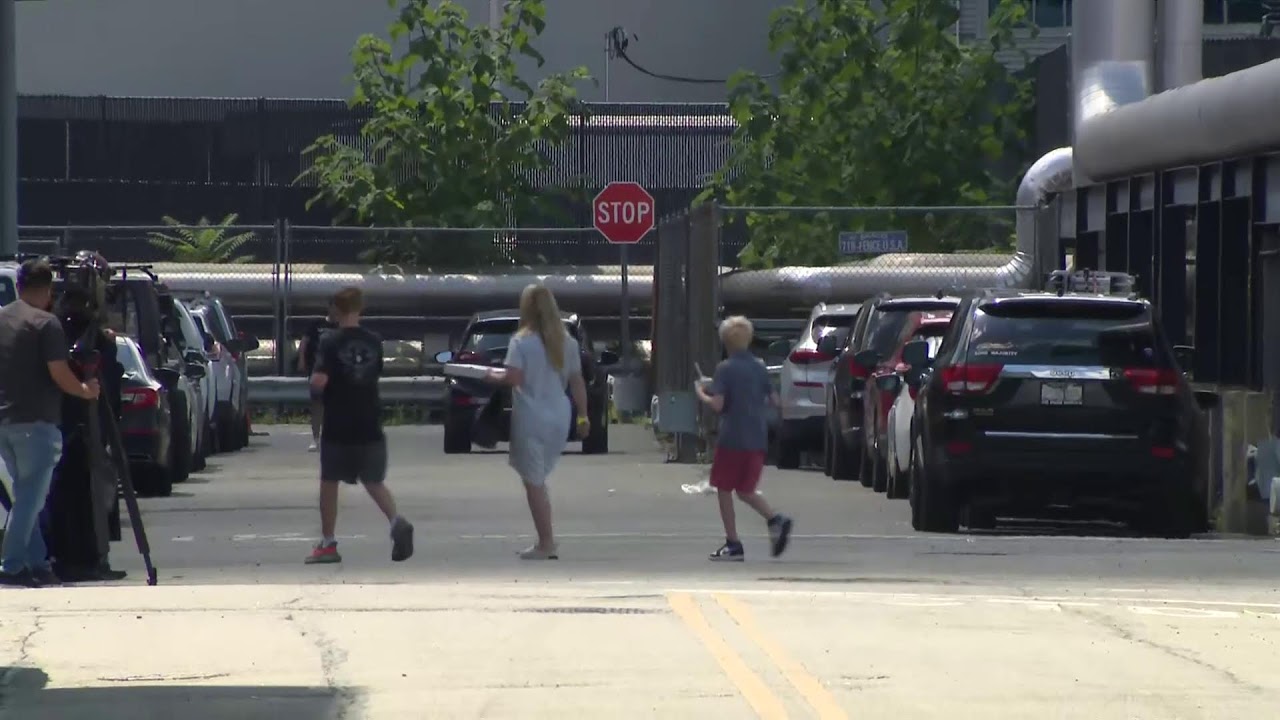Commissioner Dawn Pinnock, Department of Citywide Administrative Services: Good afternoon, everyone. I’m Dawn Pinnock and I proudly serve as the commissioner for the New York City Department of Citywide Administrative Services, more commonly known as DCAS. And I’m so delighted to join all of you for this special announcement. DCAS is extremely proud of the work we are doing to make New York City’s fleet safer, more efficient, and environmentally sound. That’s reflected in safety pilots like the one we’re launching today.

Commissioner Pinnock: But before I continue, I would like to first thank Mayor Adams for his unwavering leadership and his support as we explore and roll out new safety features. Executive director of Transportation Alternatives Danny Harris who has joined us today. Our entire fleet management team, especially Keith Kerman, who has been a visionary leader in fleet innovation.
Our sister agencies that are participating in the Intelligent Speed Assistance pilot, including the Parks Department, the Department of Transportation — and Commissioner Rodriguez RXNT Named to the Top 100, who’s been a long standing supporter of our work — the Department of Environmental Protection, the Department of Corrections, the Taxi and Limousine Commission, Housing Preservation and Development, the Mayor’s Office of Operations, and the Business Integrity Commission.
I’d also like to thank Lindsay Greene, president and CEO of Brooklyn Navy Yard Corporation, for having us in her space today. Lastly and certainly not least, I’d like to acknowledge our interns from the Automotive High Schools who are here with us today. They’re truly all future leaders.
Commissioner Pinnock: Our city’s fleet is critical to the work we do in service of all New Yorkers. With the new Intelligent Speed Assistance, ISA technology, we can literally put a stop to speeding and making our fleet vehicles safer for pedestrians, motorists, and cyclists. When installed, drivers who attempt to exceed the posted speed limit are thwarted by the technology, and the car will automatically decelerate. It has the potential to save lives and restrict fleet operators from disregarding the rules. The active ISA retrofits we are adding to 50 fleet vehicles are part of this pilot, and they will help us reimagine the possibilities for the future, a future where fleet operators fortify their positions as standard bearers and set the tone for safe driving in New York City.
Commissioner Pinnock: It’s just one of the many ways we are implementing new features and strategies to improve safety behind the wheel. With our defensive driving courses, telematics, surround and dash cameras, and vehicle safety systems, safety is at the heart of the city’s fleet. We’re already making strides. Excessive speeding by fleet operators is down 52% in the last two years, and injuries from crashes are down 20% during the same time period. We hope this pilot will build upon the success and reinforce New York City’s position as the leader in fleet management.
Commissioner Pinnock: With that, please join me in offering a warm welcome to someone who is setting the tone for innovation in all aspects of city government, our mayor, Eric Adams.
Mayor Adams: Good look, good look, good look. Like that. So, I say it over and over again about every crisis and every issue that we are facing in the city, that there are many rivers that feed the sea of these crises, and so there are many rivers that feed the sea of traffic fatalities and crashes, and we have been constantly damming each river. We dammed the river by getting Albany to reinstitute or to put in place 24/7 speed cameras. We’re damming the river by enforcement. We’re damming the river by going after those illegal dirt bikes that are just a terror on our streets. We’re removing hundreds of those bikes and we’re going to continue to do that. We dam the river when we put in place technology that can let us monitor remotely if our drivers of our city fleet, if they are actually following the speed limit.



















Leave a Reply